“Skills-based matching makes the potential for mobility across the entire labor market limitless.”
Longread (10 min)
How can you optimally utilize skills-based matching through the use of AI? In an interview on the Dutch Emerce TV, colleague Kasper Kok, an expert in the field of Skills Intelligence, discusses the possibilities AI offers, what the pitfalls are, and what concrete results it delivers. You can find the Dutch video interview below the article.

About Kasper Kok
Senior Product Manager
Table of contents
- Is AI a bomb under the current labor market?
- The biggest challenges of skills-based matching
- Impact of AI on skills-based matching
- Textkernel’s Skills Intelligence versus other solutions
- Dealing with skills that are not on the CV
- How can you validate skills?
- Resistance to skills-based matching
- Create an argument for a skills-based match with GenAI
- The pitfalls of skills-based matching
- Laws and regulations surrounding AI
- Anticipating jobs that don’t exist yet
- How quickly can you achieve success with skills-based matching?
Is AI a bomb under the current labor market?
A bomb is a strong word, but it is a new wave of automation, comparable to the rise of machines, the internet, and digitization. With each wave, certain processes and tasks shift from the human domain to the computer or machine domain, and that is happening again now. This brings changes in the skills that are in demand. That’s why skills-based recruiting is very important now. Interestingly, the same technology, such as generative AI, makes the processes around skills-based matching easier and more effective.
Have we put employees in a box for too long?
Yes, I think we have. We have thought too much about talent in terms of job titles, which is a limited way of thinking. This causes you to overlook a lot of talent. Take, for example, a physics teacher and a data scientist. Although these professions do not seem similar at first glance, they share many common skills, such as mathematics, modeling, data management, and scientific methods. A physics teacher can, therefore, with some additional training, make the transition to a data scientist.
“We have focused too much on talent in terms of job titles, which is a limited way of thinking. This causes us to overlook a lot of talent.”
Take, for example, a physics teacher and a data scientist. Although these professions do not seem similar at first glance, they share many common skills, such as mathematics, modeling, data management, and scientific methods. A physics teacher can, therefore, with some additional training, transition to a data scientist.
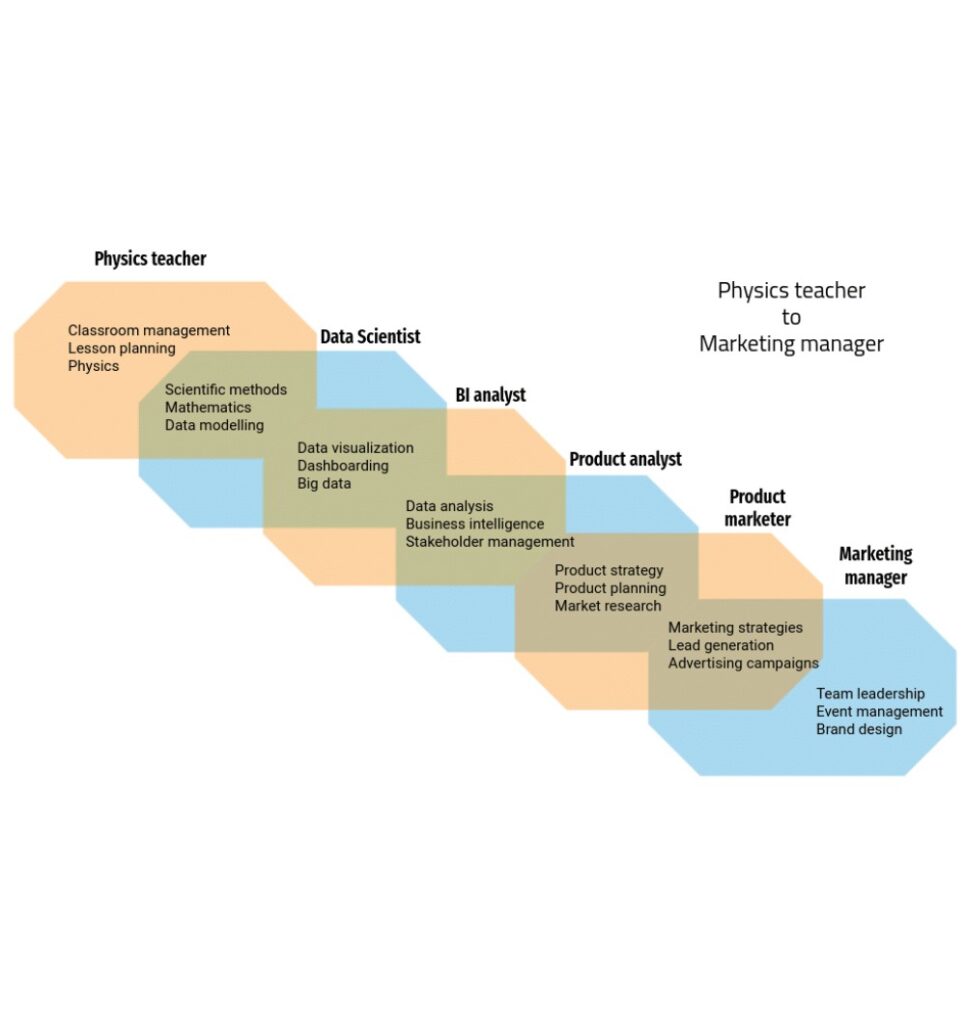
In the current talent climate, it’s essential to establish learning programs that focus on developing the missing skills for each next step in someone’s career. Because if you zoom out further, you see that even more interesting careers are possible, such as growing from data scientist to business intelligence analyst, and then to product roles, like product marketing or even marketing manager. By only looking at job titles, you miss these insights and do not utilize the full potential of the candidate.
“Employees who are approached with a skills-based mindset feel much more empowered and valued.”
Employees who are approached in this way feel much more empowered and valued. They have opportunities to embark on interesting learning paths. Instead of thinking “you’ve always been a project manager, so let’s make you a project manager again,” we look broader based on skills. This opens up new career paths and development opportunities within the organization.
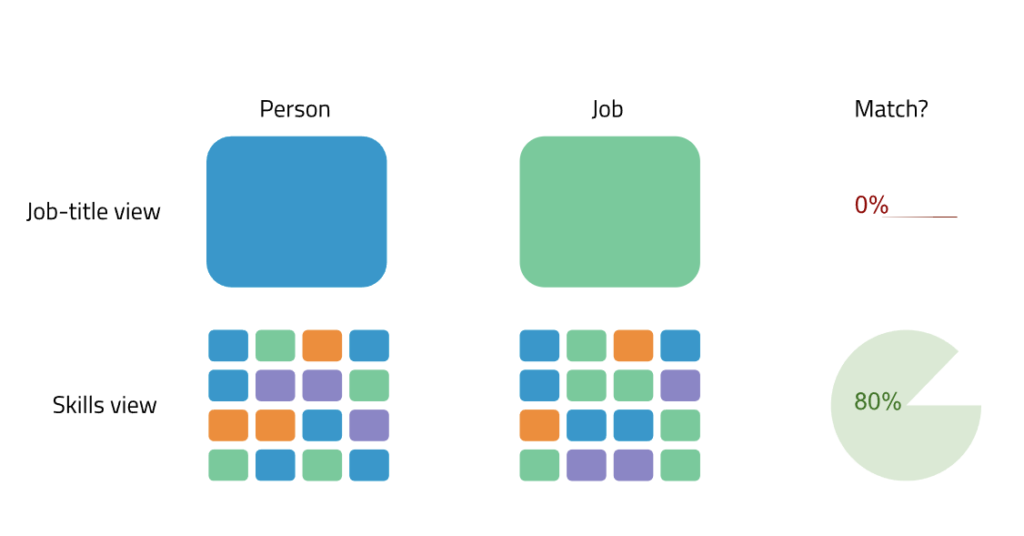
What is the biggest obstacle to taking that step from old-school to new recruitment?
It requires more work and deeper analysis. Instead of just looking at job titles, you need to understand the skills of candidates in detail. This requires a cultural shift, where companies decide to work skills-oriented. Some progressive organizations have already established a long-term strategy to achieve this transition.
At Textkernel, we see that certain clients have committed to working entirely skills-based by 2026. These organizations often take two to three years for this transformation process, where they create a detailed plan that encompasses all HR processes, from performance reviews to recruitment. Through a phased and systematic approach, the entire company can adapt and optimally utilize the benefits of a skills-based approach.
“These organizations often take two to three years for this transformation process, creating a detailed plan that encompasses all HR processes, from performance reviews to recruitment.”
How does AI help with skills-based matching?
One of the developments we are seeing now is that the ability to read resumes, something we at Textkernel have been doing for twenty years, is getting better and better. This technology helps us improve matching algorithms and reduce errors.
To give an example: LinkedIn sometimes gives suggestions for new jobs that are not always logical. I recently heard a case of a painter being offered a job as a hairdresser because both professions involve “working with lacquer.” These kinds of errors, based on keywords, occur because individual words can have the same meaning in different contexts.
New forms of AI, which can truly understand skills in the context of a document and a career, are making these errors less and less frequent. This ensures that skills-based recruitment becomes more feasible. AI can now distinguish between different meanings of the same word by analyzing the context.
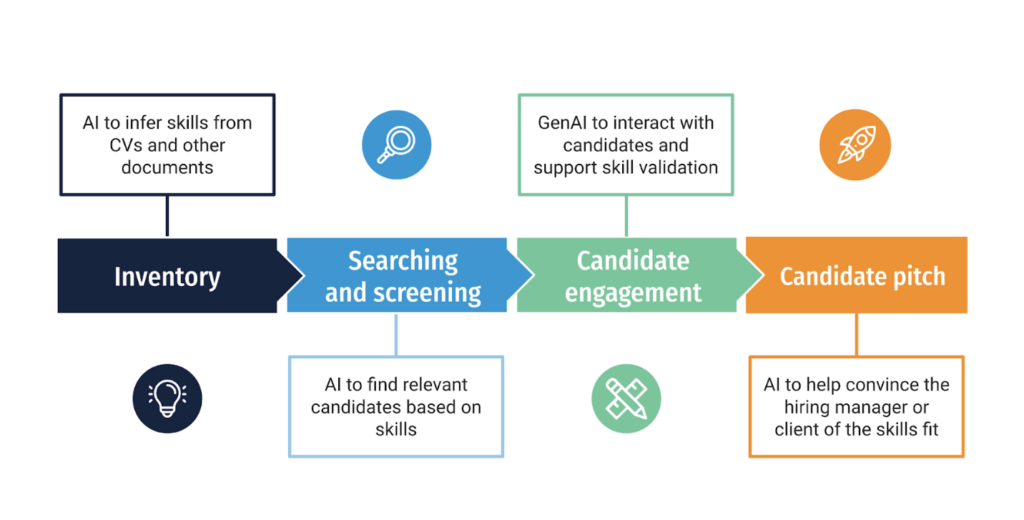
So, when it comes to context, AI really needs to be able to understand the differences between certain skills?
Yes, exactly. Current AI technology, such as that underlying chat-GPT, is already capable of that. Anyone who has played with chat-GPT knows how impressive it can be, especially the first few times. This technology can generate voices, create videos, and more. The power of this AI is that it brings with it an enormous amount of background intelligence, learned from millions of data points. This makes it possible to make skills-based matching much more accurate and effective.
“The power of this AI is that it brings with it an enormous amount of background intelligence, learned from millions of data points. This makes it possible to make skills-based matching much more accurate and effective.”
What makes your skills-based matching tool different from others in the market?
New AI tools are emerging daily, but what sets our Skills Intelligence apart is our focus on skills. We map out in great detail which skills are associated with different professions. We can create a skill profile for about 5000 professions. We have an extensive network of professions and skills.
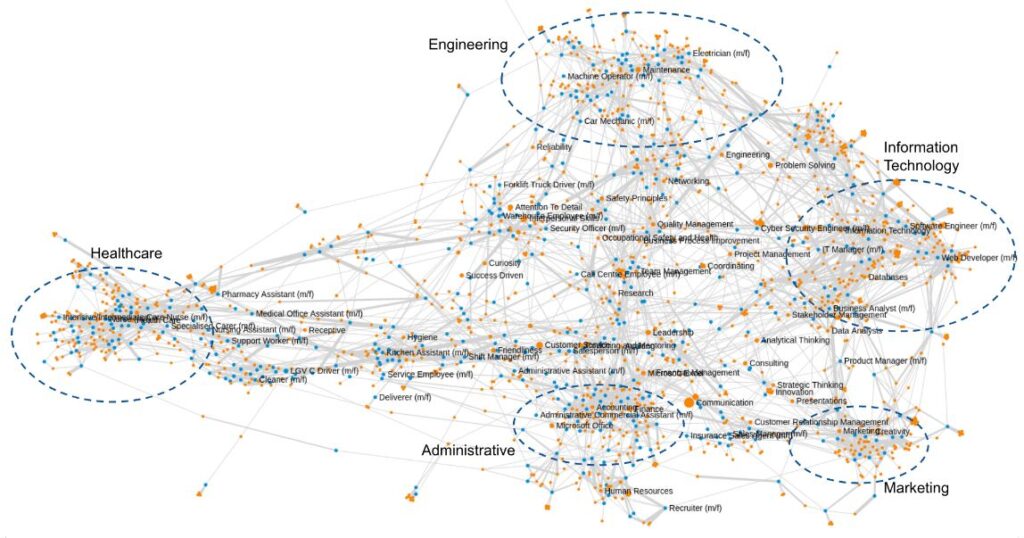
Image description: You see the entire labor market mapped out as skills and professions. The blue dots are the professions, the orange dots are the skills. Skills and professions that have a lot to do with each other cluster together. For example, you see a medical cluster, an engineering cluster, and an AI cluster. This is our knowledge base that we use for parsing, matching, and all other applications. It is the engine that drives all our processes, and with new generative AI applications, this knowledge base is only getting stronger and more effective.
“The potential for mobility across the entire labor market is virtually limitless.”
It’s quite logical that professions within the same industry make mobility possible, but you can also see that there are paths to be taken everywhere between these clusters. This means that the potential for mobility across the entire labor market is virtually limitless.
How do you deal with skills that are not explicitly stated in CVs?
That’s a good question and precisely one of the developments we’re seeing now. Skills can be explicitly mentioned, but they can also be more hidden in a sentence. For example, someone can have entrepreneurship without explicitly stating it, but you can see it if that person has started three companies.
We want to deduce those skills from background information. We are making more and more strides in inferring skills from contextual information. Sometimes it can be logical to guess a skill, such as with a Java programmer who may not mention that they can program because it’s logical given the title.
And how do you validate those skills then?
In addition to resumes, we also use other documents such as cover letters or project descriptions. More and more interactive AI tools are being used, such as chatbots that can ask questions to validate skills that are not explicitly mentioned.
In addition, assessments or trick questions can help to validate whether someone actually possesses certain skills. This is important because people sometimes exaggerate their skills, such as someone who has managed one hobby project and lists project management as a skill. Through AI and assessments, we can better distinguish between different levels of experience and skills.
That sounds like a comprehensive and well-thought-out approach. How is AI playing an increasingly important role in this?
AI plays a crucial role in processing and analyzing large amounts of data to identify and validate skills. AI tools help us to work more efficiently and gain better insights into the skills of candidates. Through AI, we can not only recognize and validate skills but also predict which candidates can be successful in new roles, even if those roles do not yet exist. This makes our skills-based approach very powerful and effective in the current recruitment landscape.
“Through AI, we can not only recognize and validate skills but also predict which candidates can be successful in new roles, even if those roles do not yet exist.”
Is there also some kind of resistance when you propose a candidate based on a skills-based match?
Yes, there is definitely resistance. There are certain patterns that have been going the same way for many years. With every placement, someone has to be convinced, whether it’s a hiring manager internally or a client in external recruitment. It’s always easier to convince someone if you can offer exactly what they asked for.
For example, if a client asks for a process analyst and you have a resume that says ‘process analyst,’ convincing them is easy. But if you propose someone as a data analyst because the skills match, you need to have a good story to explain the potential of that candidate, possibly in combination with a certain learning path.
How do you argue for a skills-based match?
That’s something we hear recruiters are spending a lot of time on now, writing that argument. This is often done using GenAI tools like ChatGPT, which can help formulate these arguments quickly and convincingly. This can really save time because the reasoning is based on rules in AI. Creating a detailed report to explain the difference between two positions can be time-consuming, but with the right AI tools, this process can be much more efficient.

What are the pitfalls of skills-based matching?
One of the biggest pitfalls is that companies are often very enthusiastic to ride the AI wave and want to take advantage of the benefits, but their own data is often not in order. Many companies do not have a good picture of their own talent pool because their data is incomplete or outdated. To be able to effectively recruit based on skills, it is crucial that all your candidates and employees have an up-to-date skill profile in the same HR system or ATS.
“Many companies don’t have a good picture of their own talent pool because their data is incomplete or outdated.”
The skill profile must be complete and up-to-date, including skills learned during projects. Without a good overview of the skills you have in-house, it’s difficult to recruit based on skills or determine your HR strategy.
Our technology helps with this by automatically updating skill profiles. This can be done, for example, based on resumes, although resumes often become outdated quickly. We also extract skills from project documents and analyze the texts associated with a project to identify relevant skills. This ensures that the data layer is complete and up-to-date, which forms the basis for skills-based recruitment.
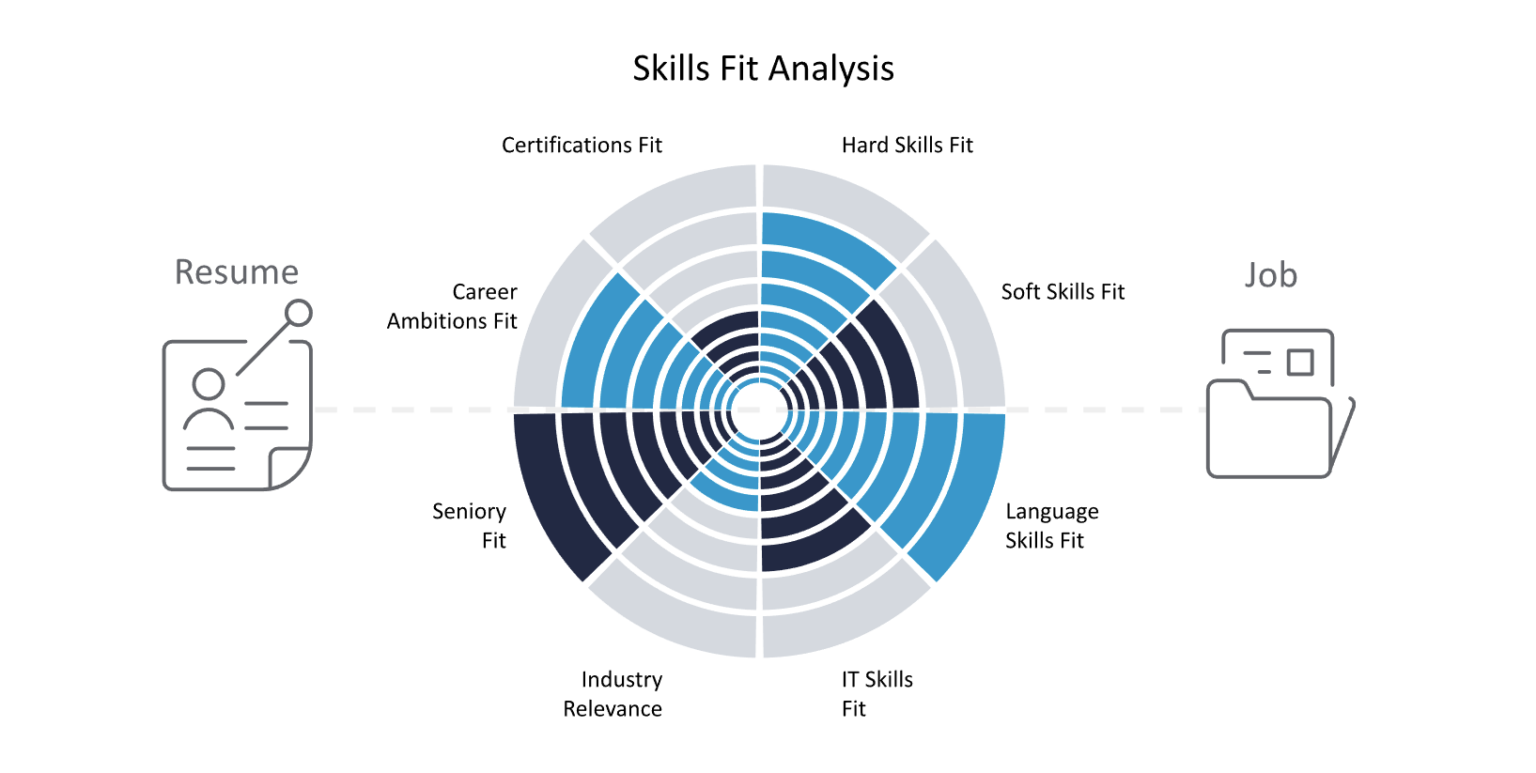
In addition, we use external sources such as LinkedIn, where profiles are continuously updated and people post content that showcases their skills. We also analyze blogs, forums like Stack Overflow, and other platforms to get a more complete picture of someone’s skills. This ensures that we have much more information than just a resume, allowing us to achieve a more accurate and effective matching process.
And what about legislation? You can scrape everything, but is it allowed?
Yes, there is a lot of important legislation coming. For example, the EU AI Act, which is European legislation, but new laws and regulations regarding AI are also emerging in other parts of the world. It’s mainly about transparency regarding how AI is built and on what data it is trained. Additionally, it’s important that it remains manageable for those who use it, including its limitations.
“No AI is perfect, and what you absolutely want to avoid in recruitment is an AI matching system with bias in it.”
No AI is perfect, and what you absolutely want to avoid in recruitment is an AI matching system with bias in it. For example, there are matching systems that learn from placement data, so from thousands or millions of cases of “this profile was placed for this vacancy.” That sounds interesting and is valuable data, but if your data shows that 95% of IT roles have been filled by men, you don’t want your AI to then learn that men are the best candidates for IT roles.
Learn more about Responsible AI
How can you anticipate jobs that have yet to be created?
If you look at the ongoing AI revolution, it will probably create new jobs. For example, I’ve already heard of an AI fact-checker. We see that ChatGPT sometimes spits out nonsense. If you really want to use that content generated by AI, you actually want someone to look at it. Or an AI ethicist, someone who can think well about the ethical consequences of using AI.
If you’re looking for an AI ethicist now, you don’t actually want to type that job title directly into your ATS, because you probably won’t find anyone since that profession doesn’t officially exist yet. It’s better to look at the skills needed for such a role, such as knowledge of ethics, analytical thinking, and being able to process texts well. By identifying and expressing these skills, you can find people who may be suitable for this profession.
“By identifying and expressing skills, you can find people who may be suitable for a profession.”
When can you see the first results when you start working with skills-based matching?
The moment you start working with AI within recruitment and skills-based matching, it doesn’t take long to see results. If a recruiter starts working with it individually now, there’s a good chance you’ll have immediate success.
However, it’s most effective if it becomes an organizational strategy to work skills-oriented. Companies that do this, as research shows, report shorter placement times, more placements, and higher satisfaction. Internal recruitment also benefits from this because employees feel more valued and empowered.
Are there any takeaways for companies that want to start with skills-based recruitment?
Start small, but make sure it comes from both the top and the bottom. Management needs to support it, and recruiters need to show that it works. This creates a new mindset within the organization. Recruiters can propose out-of-the-box candidates and demonstrate with concrete examples that this approach works.

